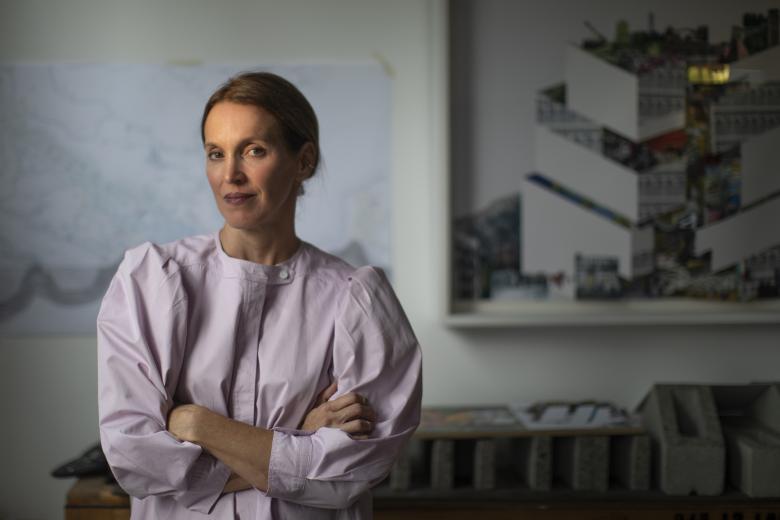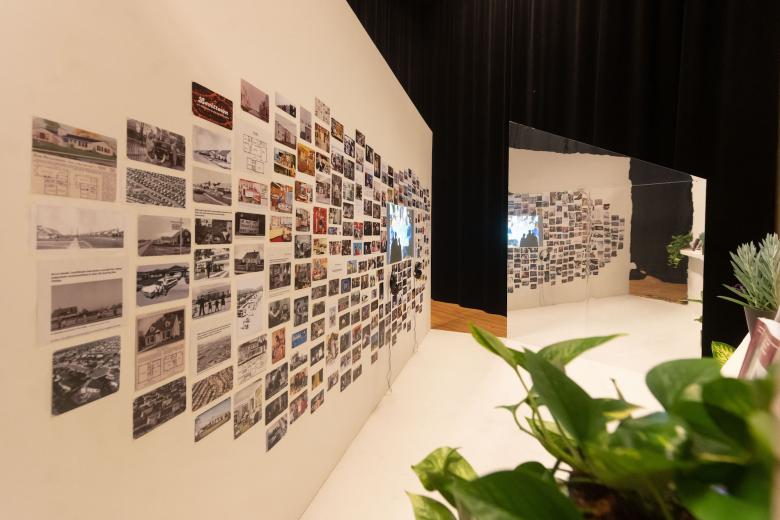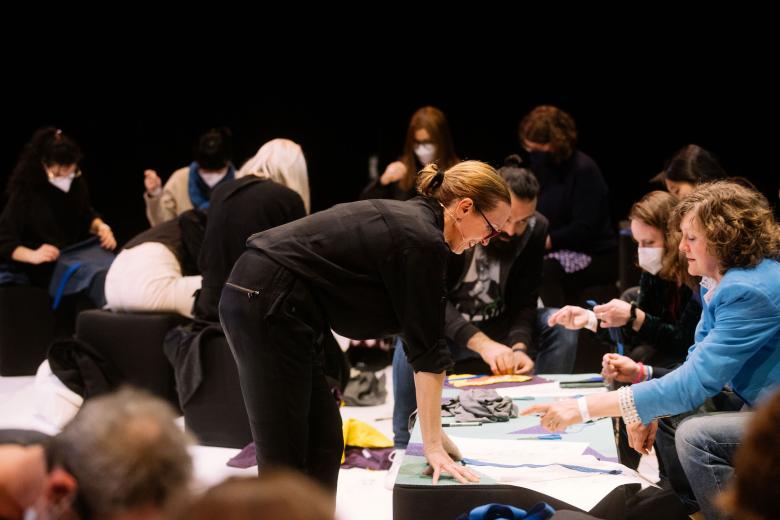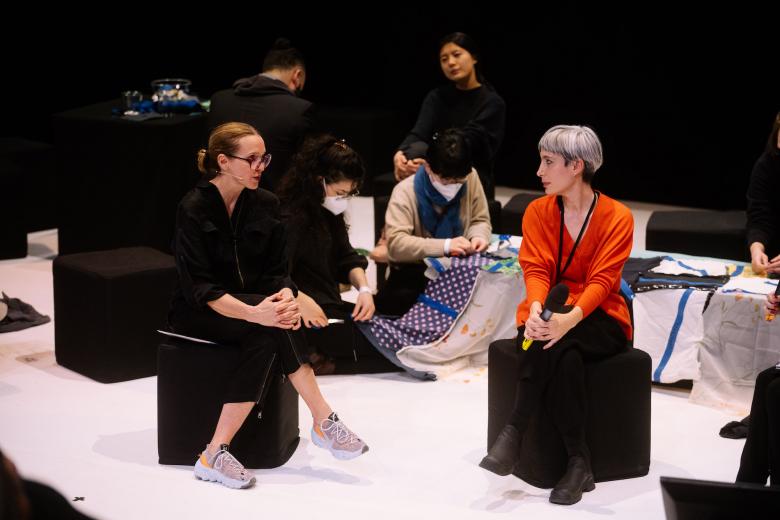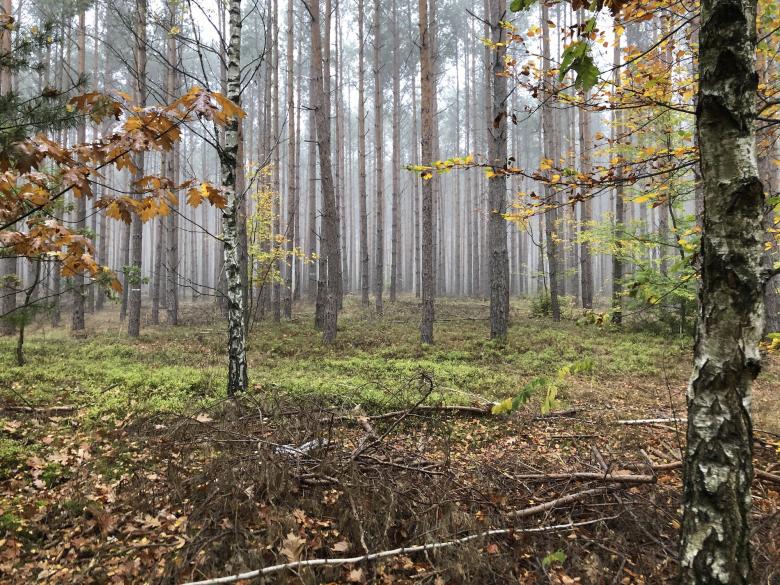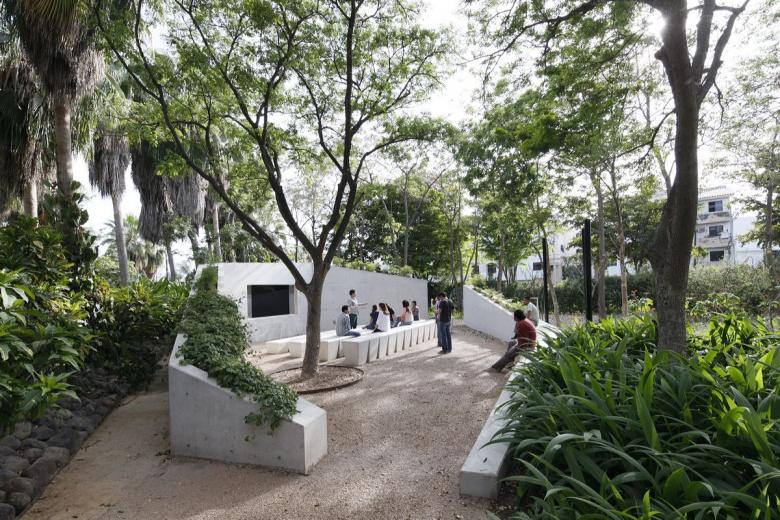Evident Forms of Care
Ulf Meyer
3. Mai 2022
Tatiana Bilbao (Photo: Ana_Hop)
Mexican architect Tatiana Bilbao just wrapped up a mentorship with Luísa Sol as part of Germany’s Forecast Festival. Now Bilbao is the subject of an exhibition opening on May 14 at Aedes Forum and her practice is designing a monastery outside Berlin. Ulf Meyer spoke with Bilbao about these projects and what her architecture is all about.
Ulf Meyer: For the Forecast Festival in Berlin you were mentor for Luísa Sol from Portugal. Yet you are a mentee of Jacques Herzog. How are things going?
Tatiana Bilbao: I'm always a mentee. In life I try to learn from everyone. But I'm not an official mentee. I have not been an official mentee of anyone. No one has appointed me as a mentee, but I try to always be a mentee, even with my students. I like to learn from everybody, also from Luísa.
The mentorship with Luísa has ended. The last presentation was in the festival, but we will continue working together because she's doing a book and I help her with interviews with architects and personalities. It's been a wonderful year. I always take opportunities of being closer to people and working in direct contact to learn.
This opportunity with Forecast was amazing in order to expand my knowledge. Luísa's topic was something that I've been working on in parallel, but not as specifically. It was interesting to immerse myself in that subject. Her proposal is a reflection on screen-based images of the home and the domestic sphere.
Luísa Sol, Architectures of Inclusion and Exclusion. Installation view at Forecast Festival, April 6–8, 2022, Radialsystem Berlin. (Photo: Camille Blake)
The question of the “home” is what she is looking at. Is that of relevance for your architectural design work as well? You also designed a tapestry — or should we call it a patchwork? — in collaboration with the participants that will be displayed in Australia.
Yes, you're right. Architecture is one of the most evident “forms of care” for me because it provides shelter to a body. The first one is the one that we inhabit most of the time, although now I don't know if that's the house or work. Why should they be divided? I never understood architecture as an aesthetic definition but as a form of care. For me it means a big responsibility and I have dedicated my career to studying architecture that way. Living spaces play a major role. I have been studying what we understood as the primary form of living right now. One hundred percent of my research work and 70% of our design work is about living spaces for any human being.
We were invited by the National Gallery of Victoria in Melbourne to do a pavilion there this year. They commission a designer or architect every year to do a pavilion. This year they started a series of five that are sponsored by Mecca, a cosmetics company led by a woman. I'm the first one in this series. We propose to create a space of interaction with the most basic forms of care that we have in our lives: the care of our body. But the first layer of care that our body has is clothing. How do we care of clothes? That is relevant but we have relegated it into a service that is provided either by a machine in our house, operated by someone or by someone who is underpaid. Normally this type of labor is invisible in the house.
If we don't change the way we relate to care as society, we will not progress. If we understand the importance and the necessity of caring for our own body we will then understand the care for the other and the planet. If we continue to understand that that necessity is only covered by buying a service or a product, then we cannot break the cycle of exploiting the planet, exploiting everybody. Our installation is a “social laundry” that brings back how laundry was done in communities in Mexico not so long ago. In the exhibition laundry is going to be animated with quilts that are going to be sewn in different workshops. The first one was done during the Forecast Festival in Berlin.
Tatiana Bilbao guides a textile collage workshop at Forecast Festival, April 6, 2022, Radialsystem Berlin. (Photo: Camille Blake © Forecast)
You are famous for communicating architectural design ideas beautifully in collages — and patchwork is a kind of collage as well. Is there a similarity between working with graphic and textile collages?
It's exactly the same direction. A collage is a sum of ideas that can be interpreted well. When they're added it's a collective idea to communicate many things to the viewer. It can be interpreted in many ways. It can be thought of as the starting point of a conversation. Because an acceleration can always be modified, added, or constructed.
This is an important and basic form of representing the architecture I do, because I believe that architecture should be that exactly. This aim I haven't achieved yet because it's difficult. The physical reality is finite and defined, but architecture should be a platform for everybody to create their own existence. How can we do that? There is a need to at least have this as a form of conversation. That happens and not for effect, but to intervene architecture in many ways, even though it's not physical. We have been trying to do that all the time. A collage is a way of representing how architecture should be interpreted by the one that inhabits, in their own words. Caring for the other is a way of expressing how we care.
For these quilts everybody brings a garment. If they don't, we will provide garments in the workshops. We're also providing ribbons to write names, and we ask people to write the names of the people who had cared for the clothes or the people who mean something when they think of these clothes and put them together. While thinking about who cares for their clothes, who had cared for the clothes when they were growing up, speaking on those terms, sewing this patchwork together, creates a conversation. The quilts are a representation of this conversation in the workshops. So, yes, it's a form of collage.
Tatiana Bilbao und Luísa Sol in conversation at Forecast Festival, April 6, 2022, Radialsystem Berlin (Photo: Camille Blake © Forecast)
You have an exhibition, En Común, coming up at the Aedes Gallery in Berlin. Will the tapestry be on display there?
No, it's for a different exhibition.
Can you give us a glimpse? What are you going to present? Readers are itching to find out more about your commission for the monastery outside of Berlin. How is that project going?
It's a lifetime project in both directions, something that already change the way I think about architecture and the way I do architecture. The monastery is the only typology I have encountered that speaks about care. It's a place that holds a body to exist in the physical world, enabled to live a spiritual life. This is what it is designed for. It's a specific design that has not differed for centuries, because the body needs the same things for many centuries. The challenge is that now we make our lives much more complex. Monastery life is more complex than it was ten centuries ago. How to reconcile things, that is our task. We have been working for almost five years on this project and it's been amazing. This is a collaborative project, we invited DOGMA and MAIO to work with us.
We have been working on it for five years, but if you think that it will remain for 2,000 years, maybe it’s still very short. There's a necessity of doing this with a lot of care. The first task when the monks contacted me was to intervene an existing Cistercian cloister that was secularized 200 years ago. But that was not possible. So they decided to build a new monastery from scratch. The second task was to help them decide where to do that. We found the site, which is an interesting place because it's a former secret Stasi residence. There's a difficult history to be addressed and to be healed. We have submitted the first set of plans for the community to review in order to start the permitting process. We also started the demolition. The building was in bad shape, structurally risky. There were a lot of dangerous materials at the site, like asbestos. It's exciting. We have a general plan, but not yet a specific design.
Will that project be in the show?
The show is about eight projects. The curators wanted to show projects in an architectural way. I've always been skeptical about showing architecture in an exhibition because architecture needs to be lived. I do things for exhibitions but I don't do architecture for exhibitions. This is why we decided to show the projects represented by objects that are linked to the project, to create a representation, and drawings that show how these projects are lived.
There will be a catalog that explains them. Each of the projects, like the monastery, will have their own object of representation. It's showing our idea, on how we are focusing on creating spaces for people to interact. These objects are exactly that. They're asking you for interaction. They will be like “Oh, I want to see,” “I want to talk to someone,” “I want to climb.” Our projects are ideas of places and platforms to engage with other people.
Site for Maria Friedenshort Monastery in Neuzell, Brandenburg, Germany. (Photo courtesy of Tatiana Bilbao Estudio)
When I think back to your exhibition at the Louisiana Museum of Modern Art in Denmark two years ago, the botanical gardens in Culiacán and Puerto Escondido Casa Observatorio stick out in my mind. Do you feel okay if people associate you with these two projects, or have new projects been produced in the meantime that are more important?
The gardens in Culiacán are a project that we have been working on since we started in 2005. That is the most important project we have because it has allowed us to elaborate our thinking. The botanical gardens define the work of our office. The Casa Observatorio is designed by the artist Gabriel Orozco; we didn't design that house. That project is representative about our notion of architecture as a collaborative act. These processes are never individual and they're always done with others. This project is representative of that line of thought, although it's not representative of my architecture, because it was not my design.
Somebody found out that your office is the only architecture firm in Mexico City run by a female architect. That's shocking. Is that true?
No, it's totally untrue. In Mexico the scene of women-led offices is amazing. There is Frida Escobedo, who had done a Serpentine Pavilion. She just got a big commission to do the new wing of the Met in New York. There is Rozana Montiel, an interesting architect who is doing a lot of interventions in existing housing complexes in Mexico. There's also an office, Communal Taller, run by two interesting women doing incredible architecture as a collaborative process, a social production of habitats; it is an interesting process of bringing history, culture, social entrepreneurship into rural areas to build houses and schools. There is Fernanda Canales, Gabriela Carillo, Gabriela Etchegaray, and at least ten more female architects in Mexico I can name who have their own practices.
Somebody described you as the “Robin Hood of architecture” — working for the wealthy, though not as a means to its own end, but also working for the poor.
I don't think of myself as a Robin Hood of architecture. When I saw it, I was shocked. Normally, I'm not shocked about what's written about me; I like other people's interpretations. I just believe that architecture is for everyone. This is why I work for different people, believe in the idea that architecture is a form of care, and enjoy working with them. Some of them are wealthy, some are not. This is how it works. I bring this idea to everyone, so everyone meets everyone.
Botanical Garden in Culiacán, Sinaloa, Mexico. (Photo: Iwan Baan, courtesy of Tatiana Bilbao Estudio)
You seem to spend more time in Germany recently. How do you divide your time between Europe, America, and other places?
Yeah, it's crazy. Right before the pandemic, I decided to change my life. Then the pandemic came. It changed my life completely. But now it's back again.
How did you want to change it?
It's not so easy because the things that divide my time are the projects we have in Europe. But mainly I am in charge of the monastery. I stick to it. I'm in Germany often because of this. I teach in Yale. This is timeshare right now in the School of Architecture, and I love teaching. For me, this is something that brings a lot of knowledge to me and my office in Mexico. These three things already put a lot of traveling on the table. I will figure out how to combine things better to travel less. But for now it’s what it is.
You visited Levitttown in New Jersey with Luísa Sol and studied the 1950s suburban, white-American dream of the standalone house with a big fridge and a big car. It's easy to ridicule and to criticize that. But is there anything that you discovered with or through Luísa’s research that changes your way of thinking about the residence or the home?
With Luísa, we did an interview with an architect who was raised in Levittown. This was amazing. I found out this because of Luísa’s research. He is my friend, but I never knew he was raised in Levittown. He described how his parents were moving there to protect their children and give them an environment for being raised with the same people around. They felt threatened when it was growing and changing and became more diverse. That was how racial segregation was defended in the territory, but I never realized how serious people were about it until hearing that they moved from Levittown because of more diverse people moving in.
For me, it's hard to understand that these places are falling apart because of that, because of not being able to reconcile with that. It changed my vision of the house. It has enriched my thought of the urgency of challenging the notion of the form of the house because that has been exported, as Luísa's research shows through media everywhere. Right now you can ask someone from Sri Lanka and another person from Nebraska how they want to live, and they may want to live the same way. This is how media has represented the house and how we want to consume it. There is an important, urgent necessity of changing that. The work with Luísa reinforced this necessity and notion of urgency.
